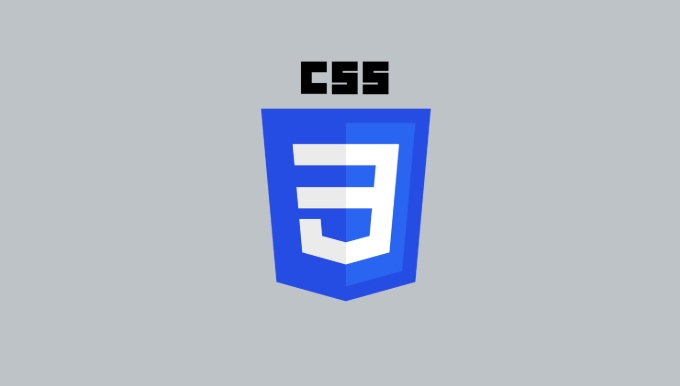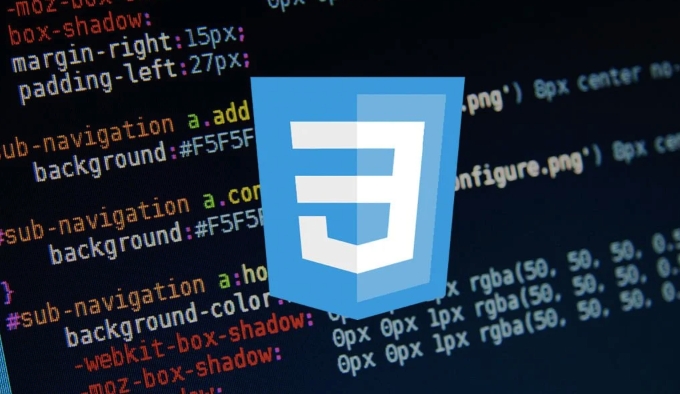Accessibility in CSS is crucial because it ensures that all users, including those with disabilities, can effectively navigate and understand web content. To achieve this, first, use high-contrast colors wisely by meeting WCAG contrast ratios, testing combinations with tools like WebAIM Contrast Checker, avoiding reliance on color alone to convey meaning, considering dark mode and dyslexia-friendly preferences. Second, make focus states visible and clear by keeping :focus styles visible, avoiding outline: none unless replacing it, and combining border, box-shadow, or background tweaks for better visibility. Third, ensure readability when zoomed by using relative units, avoiding fixed widths and problematic absolute positioning, and not blocking text resizing on mobile. Fourth, hide elements responsibly by using a .visually-hidden class instead of display: none or visibility: hidden to keep content accessible to screen readers.

Accessibility (a11y) isn’t an extra feature — it’s a core part of building websites. If your CSS gets in the way of accessibility, even the most semantic HTML won't help much. Here's how to make sure your styling supports good accessibility.

Use high-contrast colors wisely
Color contrast is one of the easiest things to overlook and one of the most impactful for readability. Text needs to be clearly distinguishable from its background. The WCAG recommends at least a 4.5:1 contrast ratio for normal text and 3:1 for large text or UI components.

- Use tools like WebAIM Contrast Checker to test combinations.
- Don’t rely on color alone to convey information (e.g., red asterisks for required fields — add an icon or text too).
- Consider dark mode users — test your color choices in different lighting conditions.
Some people with dyslexia or visual impairments prefer off-black text on off-white backgrounds instead of pure black/white. So while high contrast is important, usability also matters beyond just passing a formula.
Make focus states visible and clear
Keyboard navigation is essential for many users, and focus styles are what make that possible. By default, browsers show a focus outline, but designers often remove it without replacing it.

- Always keep
:focusstyles visible. - Avoid
outline: noneunless you're replacing it with something better. - Use more than just outline — combine border, box-shadow, or background tweaks for better visibility.
For example:
button:focus,
input:focus {
outline: none;
border-color: #005fcc;
box-shadow: 0 0 0 3px rgba(0, 95, 204, 0.3);
}This keeps the interface clean but still accessible.
Ensure content remains readable when zoomed
Many users rely on browser zoom to read content. Your layout should handle this gracefully up to at least 200%. Avoid setting fixed widths that cause horizontal scrolling when zoomed.
- Use relative units like
em,rem, or%instead of pixels for layout and font sizing. - Avoid
position: absolutein ways that might hide content when zoomed. - Test by zooming your browser and checking if all content is still usable.
Also, don’t use text-size-adjust: none; unless absolutely necessary — it prevents mobile users from resizing text themselves.
Hide elements responsibly
Sometimes you need to visually hide something but keep it available for screen readers (like a label only needed for assistive tech). Using display: none or visibility: hidden removes it completely from the accessibility tree.
Instead, use a class like this:
.visually-hidden {
position: absolute;
width: 1px;
height: 1px;
margin: -1px;
padding: 0;
overflow: hidden;
clip: rect(0 0 0 0);
white-space: nowrap;
border: 0;
}Now you can apply .visually-hidden to elements you want hidden visually but still accessible to screen readers.
That’s basically it. These aren’t complicated rules, but they make a real difference when applied consistently.
The above is the detailed content of CSS tutorial for accessibility (a11y) best practices. For more information, please follow other related articles on the PHP Chinese website!

Hot AI Tools

Undress AI Tool
Undress images for free

Undresser.AI Undress
AI-powered app for creating realistic nude photos

AI Clothes Remover
Online AI tool for removing clothes from photos.

Clothoff.io
AI clothes remover

Video Face Swap
Swap faces in any video effortlessly with our completely free AI face swap tool!

Hot Article

Hot Tools

Notepad++7.3.1
Easy-to-use and free code editor

SublimeText3 Chinese version
Chinese version, very easy to use

Zend Studio 13.0.1
Powerful PHP integrated development environment

Dreamweaver CS6
Visual web development tools

SublimeText3 Mac version
God-level code editing software (SublimeText3)

Hot Topics
 What is 'render-blocking CSS'?
Jun 24, 2025 am 12:42 AM
What is 'render-blocking CSS'?
Jun 24, 2025 am 12:42 AM
CSS blocks page rendering because browsers view inline and external CSS as key resources by default, especially with imported stylesheets, header large amounts of inline CSS, and unoptimized media query styles. 1. Extract critical CSS and embed it into HTML; 2. Delay loading non-critical CSS through JavaScript; 3. Use media attributes to optimize loading such as print styles; 4. Compress and merge CSS to reduce requests. It is recommended to use tools to extract key CSS, combine rel="preload" asynchronous loading, and use media delayed loading reasonably to avoid excessive splitting and complex script control.
 External vs. Internal CSS: What's the Best Approach?
Jun 20, 2025 am 12:45 AM
External vs. Internal CSS: What's the Best Approach?
Jun 20, 2025 am 12:45 AM
ThebestapproachforCSSdependsontheproject'sspecificneeds.Forlargerprojects,externalCSSisbetterduetomaintainabilityandreusability;forsmallerprojectsorsingle-pageapplications,internalCSSmightbemoresuitable.It'scrucialtobalanceprojectsize,performanceneed
 Does my CSS must be on lower case?
Jun 19, 2025 am 12:29 AM
Does my CSS must be on lower case?
Jun 19, 2025 am 12:29 AM
No,CSSdoesnothavetobeinlowercase.However,usinglowercaseisrecommendedfor:1)Consistencyandreadability,2)Avoidingerrorsinrelatedtechnologies,3)Potentialperformancebenefits,and4)Improvedcollaborationwithinteams.
 CSS Case Sensitivity: Understanding What Matters
Jun 20, 2025 am 12:09 AM
CSS Case Sensitivity: Understanding What Matters
Jun 20, 2025 am 12:09 AM
CSSismostlycase-insensitive,butURLsandfontfamilynamesarecase-sensitive.1)Propertiesandvalueslikecolor:red;arenotcase-sensitive.2)URLsmustmatchtheserver'scase,e.g.,/images/Logo.png.3)Fontfamilynameslike'OpenSans'mustbeexact.
 What is Autoprefixer and how does it work?
Jul 02, 2025 am 01:15 AM
What is Autoprefixer and how does it work?
Jul 02, 2025 am 01:15 AM
Autoprefixer is a tool that automatically adds vendor prefixes to CSS attributes based on the target browser scope. 1. It solves the problem of manually maintaining prefixes with errors; 2. Work through the PostCSS plug-in form, parse CSS, analyze attributes that need to be prefixed, and generate code according to configuration; 3. The usage steps include installing plug-ins, setting browserslist, and enabling them in the build process; 4. Notes include not manually adding prefixes, keeping configuration updates, prefixes not all attributes, and it is recommended to use them with the preprocessor.
 What are CSS counters?
Jun 19, 2025 am 12:34 AM
What are CSS counters?
Jun 19, 2025 am 12:34 AM
CSScounterscanautomaticallynumbersectionsandlists.1)Usecounter-resettoinitialize,counter-incrementtoincrease,andcounter()orcounters()todisplayvalues.2)CombinewithJavaScriptfordynamiccontenttoensureaccurateupdates.
 CSS: When Does Case Matter (and When Doesn't)?
Jun 19, 2025 am 12:27 AM
CSS: When Does Case Matter (and When Doesn't)?
Jun 19, 2025 am 12:27 AM
In CSS, selector and attribute names are case-sensitive, while values, named colors, URLs, and custom attributes are case-sensitive. 1. The selector and attribute names are case-insensitive, such as background-color and background-Color are the same. 2. The hexadecimal color in the value is case-sensitive, but the named color is case-sensitive, such as red and Red is invalid. 3. URLs are case sensitive and may cause file loading problems. 4. Custom properties (variables) are case sensitive, and you need to pay attention to the consistency of case when using them.
 What is the conic-gradient() function?
Jul 01, 2025 am 01:16 AM
What is the conic-gradient() function?
Jul 01, 2025 am 01:16 AM
Theconic-gradient()functioninCSScreatescirculargradientsthatrotatecolorstopsaroundacentralpoint.1.Itisidealforpiecharts,progressindicators,colorwheels,anddecorativebackgrounds.2.Itworksbydefiningcolorstopsatspecificangles,optionallystartingfromadefin






